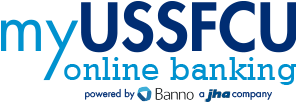What to Do If You've Been Scammed: 5 Steps to Protect Your Money and Identity
Published: September 12, 2025

Join us Sept. 24 at 6 PM ET for Would You Fall for It? — a live webinar on spotting real scams and red flags
Register Now
5 Steps to Take After a Scam
It’s a sinking feeling: you clicked a link, gave out information, or sent money—and now you’re worried it may have been a scam. First, take a deep breath. You’re not alone, and quick action can often minimize the damage.
Scammers aren’t just after your money—they’re after your trust, and they use urgency, fear, or excitement to get you to act without thinking. And they succeed more often than you might expect. In 2024 alone, U.S. consumers reported more than 2.6 million scams to the Federal Trade Commission (FTC), a government agency that protects consumers by fighting fraud and deceptive practices.
So what do you do if you’ve been scammed? The situation is challenging, but there are concrete steps you can take to recover and safeguard yourself from future fraud attempts.
Step 1: Report the Scam Immediately
The sooner you act, the better your chances of stopping losses and protecting your identity.
Notify your financial institution right away.
If you shared account details or sent money, contact your bank or credit union immediately. At USSFCU, we can:
- Freeze or replace your card
- Block unauthorized transactions
- Help you secure your accounts and identity
File a complaint with the FTC.
Visit ReportFraud.ftc.gov to report what happened. The FTC tracks scam patterns, pursues fraudsters, and in some cases, returns funds to victims.
Quick Link: One-Stop Scam Reporting
Not sure where to start? Use the official USA.gov “Where to Report Scams” tool.
This resource makes it easy to figure out which agency to contact based on the scam type—whether it’s online shopping fraud, identity theft, charity scams, or prize/lottery schemes. Think of it as your roadmap to the right reporting channel.
Step 2: Document the Details
Write down everything you remember: the date, time, what was said or sent, and how you responded. Save texts, emails, and screenshots. Print or copy bank statements showing fraudulent charges.
These records will help your financial institution, investigators, and credit bureaus if you need to dispute charges or report identity theft.
Step 3: Secure Your Finances and Accounts
Once the immediate threat is reported, lock down your accounts to prevent further misuse.
- Consider a credit freeze: Restricts access to your credit report and prevents scammers from opening new accounts in your name. Contact TransUnion, Equifax, or Experian.
- Place a fraud alert: If you don’t want a full freeze, a fraud alert requires creditors to verify your identity before approving new credit. This is free and lasts one year.
- Change your passwords: Update compromised accounts with strong, unique passwords and enable two-factor authentication.
- Set up alerts: With USSFCU online and mobile banking, you can receive real-time notifications for transactions—helping you catch fraud early.
Step 4: Be Patient but Persistent
Recovering from fraud can take time. Investigations may last days or weeks depending on the type of scam and how much money was lost. Stay in touch with your financial institution and follow up on reports. Persistence is key.
USSFCU Is Here to Help
If you think you’ve been scammed, contact USSFCU immediately. Our team will help secure your accounts, guide you through reporting, and connect you with trusted resources. Acting quickly can make all the difference.
Learn More at Our Webinar
Want to learn how to spot scams before they happen? Join us for Would You Fall for It? Real Scams, Real Red Flags on Wednesday, September 24 at 6:00 PM ET.
Register Now
Article content is provided for information purposes only.



